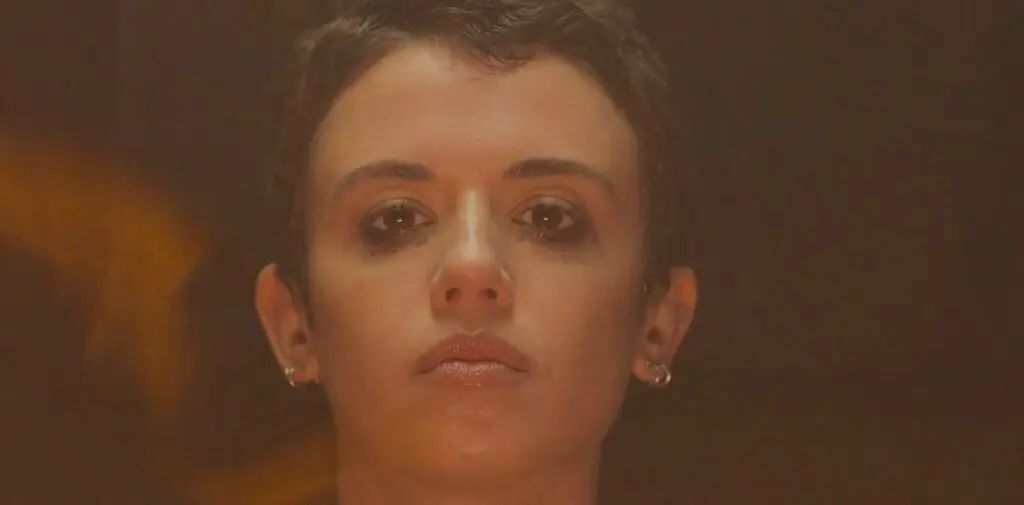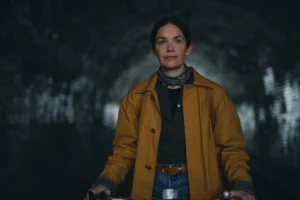Sometimes, in film, the messages can get blurry, and that’s what happens in Faceless After Dark. Surfaced as a story about the toxicity of fandom, it quickly turns into something much more. Admittedly, I’m still unsure how to feel about it.
Let’s start with the story: Faceless After Dark follows Bowie, a Scream Queen B-movie actress who lands her breakout role in a killer clown horror film. Obsession turns into reality as a deranged fan makes her a hostage and plays out the film’s horrific plot.
Bowie fools the audience as much as the premise, but the context lands right at the start. At the end of her movie, the actress did not like creative choices, and the male obsession that followed became intense and built a narrative in her mind.
Faceless After Dark surprisingly becomes a rape-revenge movie, but without the rape, putting forth feminist ideas in a toxic world. However, the message is undoubtedly wrong. In Promising Young Woman, I understood the desire for blood by Carey Mulligan’s character, Cassandra. In Faceless After Dark, I was unsure what the revenge was for.
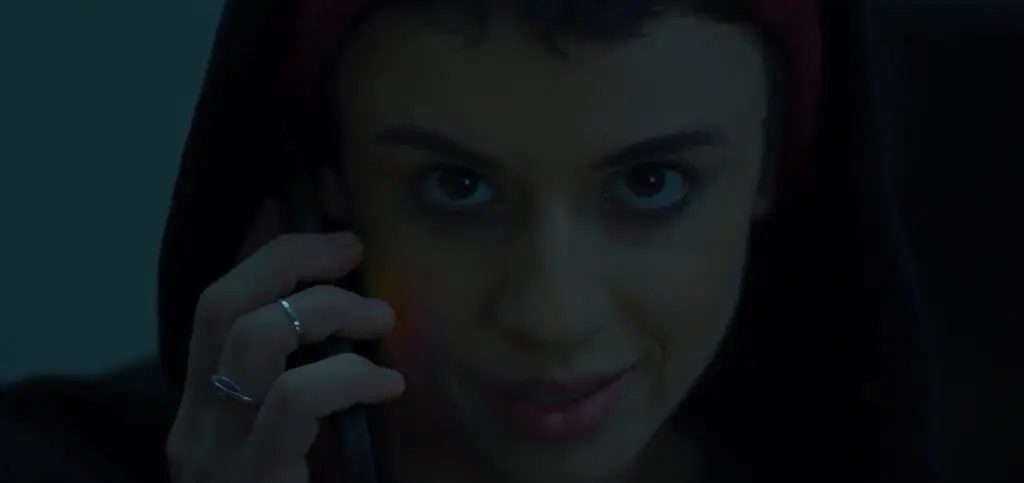
Faceless After Dark (Credit – Dark Sky Films)
Why this Thriller is Confusing
Apologies, but I have to delve into minor spoilers here. When Bowie suffers a home invasion by a man dressed as a clown, she kills him. But she did not kill him while struggling. She desired to kill him. The clown was in the wrong as he was trying to reenact her movie. What follows is a different story from the initial premise, where Bowie entices fans to their home and, before torturing and killing them, justifies why she is doing it. She does all this while her girlfriend, who is a successful actress, is doing a movie.
The motives are described by Bowie explicitly: before she kills them, she researches immoral activities that they have done. Bowie sees herself as a female Dexter, a vigilante movie actress.
But this is where I become unsure, as I’m pretty convinced, by the way this movie is written, that the director understands Bowie’s agenda, which did not resonate well with me. Senseless killing because a fan DM’d you with sexual desires, and you learn of some immoral activity by them, is not a reason to murder someone. Nor is it revenge. Just because a fan invaded the house you were in is not a reason to morph into a serial killer.
Also, serial killers follow patterns, but there was no pattern in the people she killed: from a cheating husband, a suspected pedophile to a homophobic woman. Her actions did not make sense.
Director Raymond Wood tries to impose Joker-like logic on a story while also providing the ideology of Bowie’s mind: Does she hate men? Is she angry about her B-movie life and wants more? Does she hate less progressive people? Did she always have this inside her?
Just what is it? I didn’t get that answer. The Joker is just mad at the world with a deranged mind. Bowie has the hump because her most popular movie attracted creepy simps. It’s a massive canyon between both approaches.
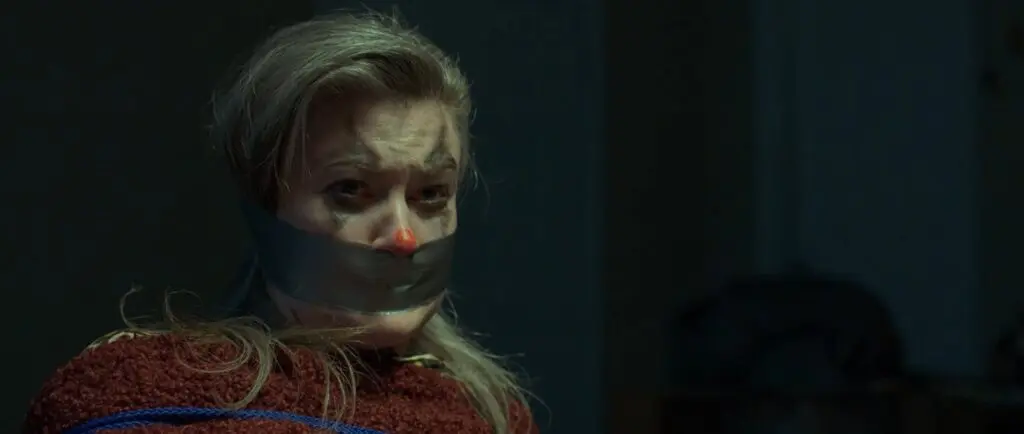
Kathrine Barnes in Faceless After Dark (Credit – Dark Sky Films)
But that doesn’t take away from the filmmaking, which I rather enjoyed. Raymond Wood clearly has an eye for the camera, with great use of lighting effects and well-imposed perspectives. He has an eye for cinematography, and he shows it off well here.
And then there’s the performances. I can’t speak much for the supporting colleagues, but Jenna Kanell effortlessly plays Bowie, ranging from super calm to manic. Faceless After Dark is a portfolio for Kanell as it shows off her range in various moments, which at the same time is a criticism of the movie that cannot make up its mind of what her character represents. Jenna understood the camera and the direction. There are some sublime shots where Kanell is thinking about the audience on the other side of the lens.
And that’s why I’m confused, I guess. This horror is a lot, but also very little at the same time. With great production, filmmaking, and a central performance, by the brutal film’s finish, you just have no idea where to stand with it.
I guess all I can conclude is that the character was far too delusional, and one act of violence transformed her privileged worldview into a monster. I’m not impressed at all, as the story loses all intellectual value.
The Ending of ‘Faceless After Dark’ Is Stranger Than The Murders
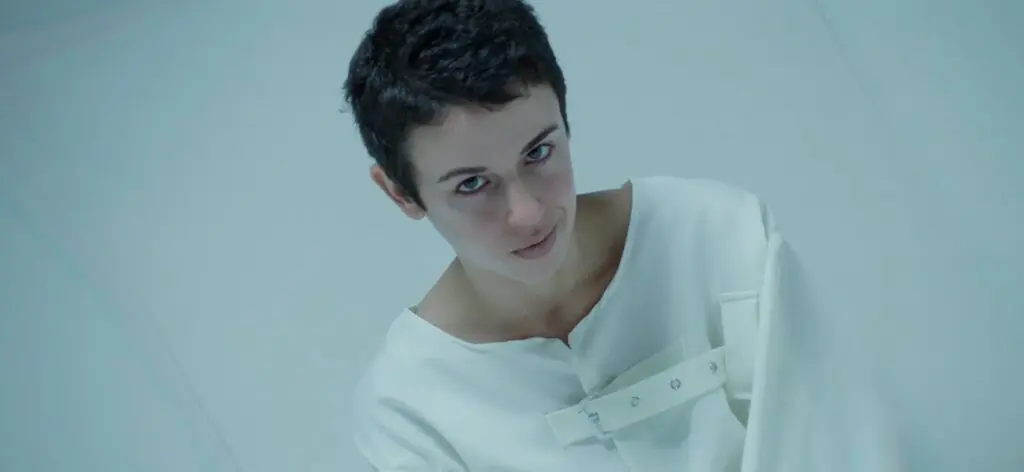
Bowie loses her mind in faceless After Dark (Credit – Dark Sky Films)
Once Bowie gets it out of her system and is feeling the pressure from her strange connection with Ryan, she calls the police herself, talking in almost a strange riddle.
The police arrive at the house and see the horrors. It’s a missed opportunity because the police arrived earlier in the movie after being alerted of a disturbance. The police are horrified by what Bowie has done.
As we reach the end of Faceless After Dark, Bowie is now in custody but more deranged than ever. Meanwhile, ironically, her girlfriend, who is a successful actress, stars in a series about Bowie and the murders she committed. She plays the character Bowie and is now dubbed the next Scream Queen. Social media mocks the real Bowie, calling her a B-movie actress who did not get enough attention as a reason for the murders.
The ending shows the irony of showbiz and how shallow it can be. Showing the girlfriend take advantage of her partner’s downfall and gain fame may be one of the main reasons Bowie became sick in the mind in the first place.
But then, the mid-credit scene confuses the message even more. Another actress is listening to a podcast in which a man criticizes the industry and relates it to women trying to play male sports. She looks over to a knife and smiles at the camera. Is this a virus or something? I’m sure I’m missing the nuance, but thankfully, I don’t need to write about this movie again.

